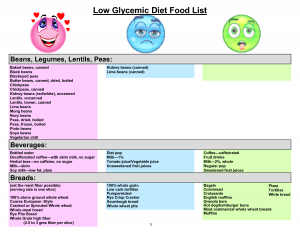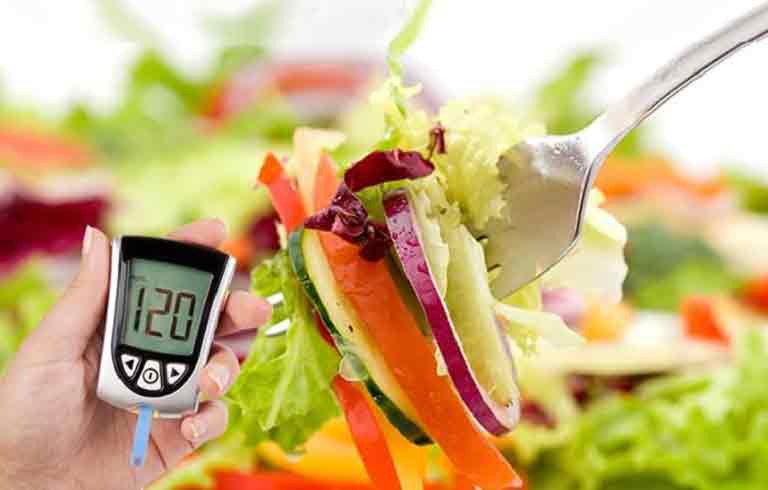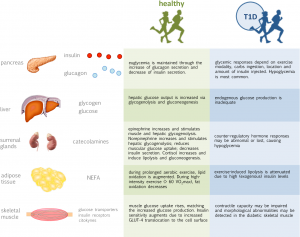Most people worldwide have a misconception which is: Diabetic Patients live in hell. This concept has aroused due to the daily monitored Blood Glucose Level. Today, I decided to illuminate the truth about the diabetic diet as well as an exercise through which diabetic patients can see life more comfortable 😊.

If you have diabetes, your specialist will probably recommend that you see a dietitian, through which you will be able to control your blood glucose level, manage your weight, and control some diabetic consequences such as hypertension and increased cholesterol levels.
Let me clarify the main points considering diabetic patients diet
Diet for diabetic patient
A diabetes diet depends on eating three meals every day on ordinary occasions. This causes you better use the insulin that your body delivers or gets through a mediation. There is a different kind of foods that can improve your organs’ activity, as well as provide a delicious plate.
To simplify your meal plan, there are 2 ways most commonly used for diabetic diet, either the plate method or carbohydrate counting, let’s discuss both so that you can pick what suits you more.
Plate method
The plate method focuses on the portion sizes perspective. It shows the quantity of every food category you should eat among carbohydrates, vegetables, and proteins. It is a preferable lunch and dinner.

- Pick your delicious non-starchy vegetables from the list below and add it in half of your plate.
- Choose your protein whether lean meat, fish, or chicken on one-quarter of your plate.
- Add your favorite healthy carbohydrates in the last quarter of the plate.
- Add a bowl of fruits from your diet list, as well as a glass of light milk.
Carbohydrate Counting
Carbohydrate counting focuses on tracking the carbohydrates amount you digest daily in whatever form it is. This way can help you calculate the amount of Insulin required daily.

Because, carbohydrates are the privilege through other food categories to turn into glucose, increasing your blood glucose level. Both diabetic management and exercise control the carbohydrate counting. Thus, it differs from one person to another. In carbohydrate counting, you need to know each food contains how many grams of carbohydrates; to easily calculate the administered amount.
List of foods that lower blood sugar
- Vegetables: There are 2 types of vegetables, the best of them all is non-starchy such as broccoli, carrots, greens, peppers, cucumber, spinach, tomatoes, kale… etc. for the starchy vegetables, it includes potatoes, corn, and green peas. A study done in 2017 has demonstrated that the prevalence of type 2 diabetes is twice lower in vegetarians as compared to the normal population.
- Fruits: Citric fruits like Orange, strawberries, and grapes, as well as melon, berries, apples, bananas…. Etc, are all good for Diabetics. Because they provide multiple vitamins, minerals, as well as antioxidants.
- Carbohydrates: It is preferable to use whole grains as your source of carbohydrates. Such as oat, Cornmeal, Basmati rice, whole grain bread, pasta…. Etc. Because they are whole grains that are considered complex carbohydrates. Whole grain and whole wheat are lower than white bread and rice, on the glycaemic index scale, which is a scale showing how quickly this food increases blood glucose level.
- Protein: You have a variety of proteins from meat such as lean meat; fish such as salmon, sardines, mackerel, and tuna; and chicken such as breast chicken or turkey. Fish in specific contains Omega-3-Plus which is categorized as good fats. It is preferable to include good fats in your diet around 2 times every week. Because, they can help in lowering your blood cholesterol levels; preventing coronary heart diseases.
- Low-fat Dairy products: Milk, yogurt, parmesan cheese, low fat, and light cheese. Also, make sure to avoid the following list, to avoid blood glucose level strike
Unfortunately, heart diseases and stroke are risk factors from Diabetes consequences. This occurred due to the hardening of arteries wall that leads to complete clogging. Thus, to avoid these conditions you shall exclude saturated fats, trans fats, and sodium from your diet.
Here are the examples of food you should Stay away from
- High-Fat Dairy Items
- Animal Proteins such as Margarine, Beef, Franks, Hotdog, and Bacon.
- Handled Bites.
- Heated Products.
- Fried Foods.
- Salty Foods.
- Processed Sweets like candy, ice creams, and backed well because they are made of simple carbohydrates, which give high blood glucose Level strike.
- All sugary beverages like soda, energy drinks, and even fresh juices with added sugars… etc.





I follow the same kind of diet and yes it really works.
Awesome information